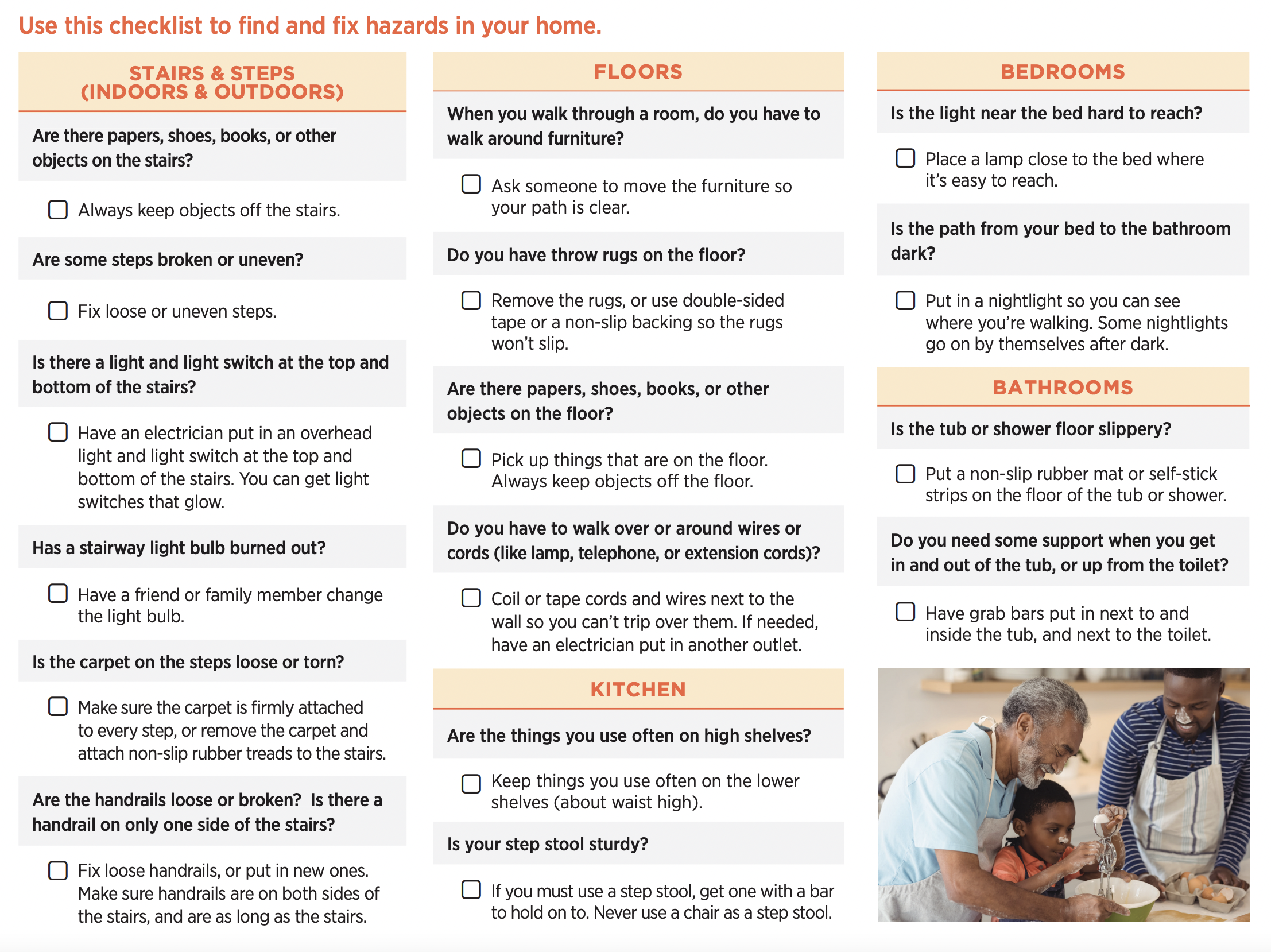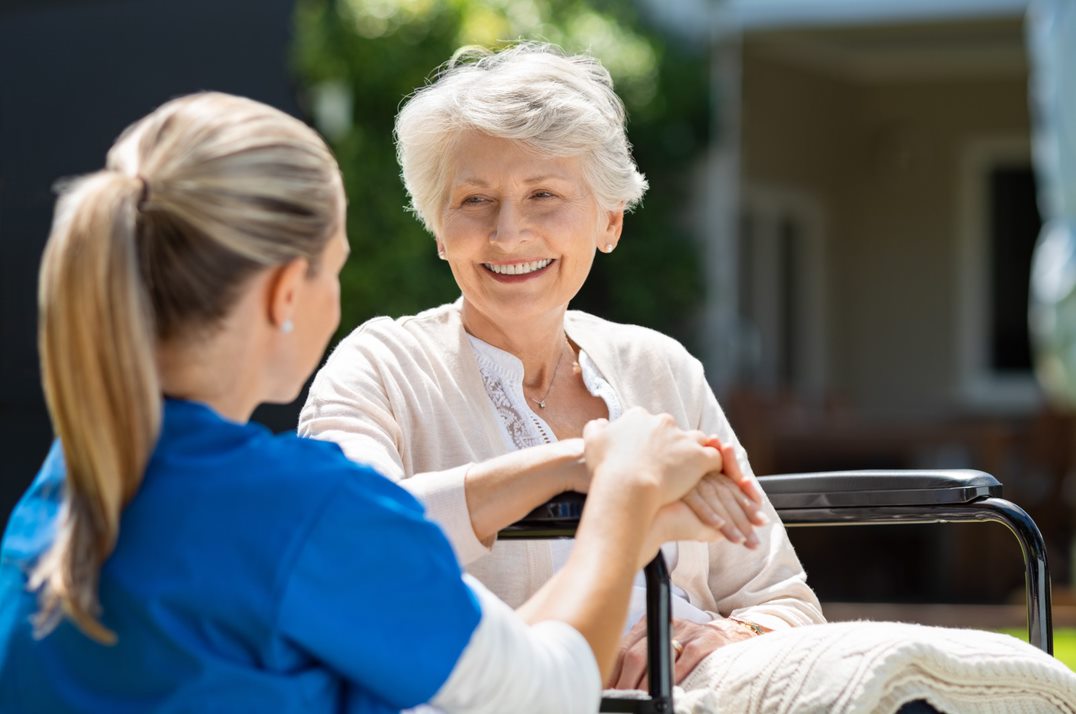Dementia Fall Risk for Beginners
Table of ContentsIndicators on Dementia Fall Risk You Should KnowDementia Fall Risk Things To Know Before You Get ThisAn Unbiased View of Dementia Fall RiskThe Ultimate Guide To Dementia Fall Risk
An autumn threat analysis checks to see how likely it is that you will certainly fall. The evaluation normally consists of: This includes a series of questions concerning your overall health and if you have actually had previous drops or troubles with equilibrium, standing, and/or strolling.STEADI includes screening, evaluating, and treatment. Treatments are referrals that might reduce your risk of dropping. STEADI consists of three steps: you for your risk of dropping for your threat factors that can be improved to attempt to avoid falls (for instance, equilibrium troubles, damaged vision) to decrease your threat of falling by utilizing effective methods (for example, providing education and resources), you may be asked a number of questions including: Have you fallen in the previous year? Do you feel unsteady when standing or strolling? Are you bothered with falling?, your supplier will evaluate your strength, equilibrium, and stride, utilizing the following fall evaluation devices: This examination checks your gait.
Then you'll take a seat once again. Your supplier will examine for how long it takes you to do this. If it takes you 12 secs or more, it might imply you go to higher danger for an autumn. This test checks strength and balance. You'll being in a chair with your arms crossed over your upper body.
Move one foot halfway onward, so the instep is touching the big toe of your various other foot. Relocate one foot totally in front of the various other, so the toes are touching the heel of your various other foot.
Dementia Fall Risk for Dummies
Many drops take place as a result of numerous contributing aspects; for that reason, taking care of the risk of dropping begins with determining the factors that add to drop threat - Dementia Fall Risk. A few of the most appropriate risk factors include: Background of prior fallsChronic clinical conditionsAcute illnessImpaired stride and balance, lower extremity weaknessCognitive impairmentChanges in visionCertain risky medications and polypharmacyEnvironmental aspects can additionally boost the risk for falls, including: Insufficient lightingUneven or damaged flooringWet or slippery floorsMissing or harmed hand rails and get hold of barsDamaged or incorrectly fitted equipment, such as beds, mobility devices, or walkersImproper usage of assistive devicesInadequate supervision of individuals living in the NF, including those that exhibit hostile behaviorsA effective loss risk administration program requires a thorough clinical analysis, with input from all participants of the interdisciplinary team

The care plan must also include interventions that are system-based, such as those that advertise a risk-free setting (appropriate lighting, handrails, get bars, etc). The performance of the interventions should be reviewed periodically, and the treatment strategy revised as required to reflect modifications in the loss risk assessment. Executing a fall danger monitoring system making use of evidence-based finest practice can minimize the frequency of falls in the NF, while limiting the capacity for fall-related injuries.
The Dementia Fall Risk PDFs
The AGS/BGS guideline recommends screening all adults matured 65 years and older for autumn threat yearly. This screening contains asking people whether they have fallen 2 or even more times in the past year or looked for clinical advice attention for a loss, or, if they have actually not fallen, whether they really feel unsteady when strolling.
Individuals who have dropped when without injury ought to have their balance and gait reviewed; those with gait or balance problems ought to obtain added evaluation. A background of 1 autumn without injury and without gait or balance issues does not call for additional evaluation past ongoing yearly fall threat our website screening. Dementia Fall Risk. An autumn threat analysis is called for as component of the Welcome to Medicare evaluation

Dementia Fall Risk Fundamentals Explained
Recording a falls background is one of the high quality indicators for autumn avoidance and administration. Psychoactive drugs in particular are independent predictors of falls.
Postural hypotension can often be eased by reducing the dose of blood pressurelowering drugs and/or quiting medications that have orthostatic hypotension as an adverse effects. Use of above-the-knee support hose and sleeping with the head of the bed elevated may additionally reduce postural reductions in blood pressure. The recommended components of a fall-focused physical evaluation are received Box 1.

A pull time better than or equal to 12 secs recommends high loss risk. The 30-Second Chair Stand examination evaluates lower extremity strength and equilibrium. Being incapable to stand up from a chair of knee elevation without using one's arms suggests raised fall risk. The 4-Stage Equilibrium examination examines fixed equilibrium by having the individual stand in 4 placements, each considerably more challenging.